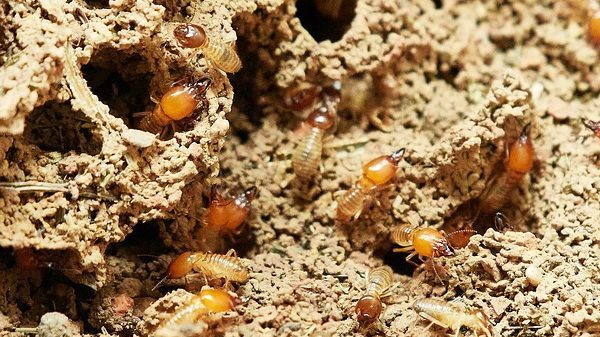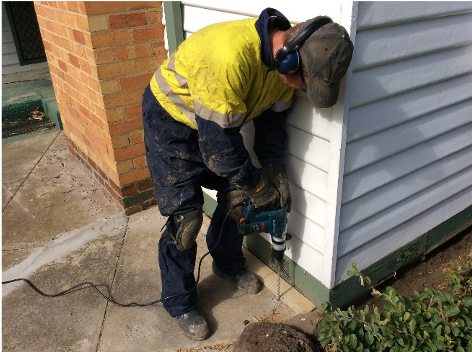3 Common Questions About Termite Treatments

As the weather starts to warm up, the team at Dawson’s are beginning to gear up for heightened termite activity as we do every year. Termites are active year-round, however, the prevalence of swarms peaks during the spring and summer months.
Each year, termites cause millions of dollars of damage to structures in Melbourne and throughout Victoria, before they are even detected. Prevention is always the best cure, but sometimes termites can still manage to find their way on to an unprotected part of your property. If your property has been infested by termites, the team at Dawson’s are ready to provide comprehensive termite treatments to your residential or commercial premises.
Below we will answer three common questions about termite treatments, including how often a termite treatment should be done. For tips on termite prevention and signs of termite activity visit the Termite page in our Pest Library.
How Often Should I Get Termite Treatments?
A full Termidor® termite treatment carried out to Australian Standards by Dawson’s Pest Control will treat your current infestation and also protect your property from termites for years to come. Termidor® will remain active in the soil around the building for 8 or more years. However, we can also offer a range of spot or partial treatments, such as a dusting program. After a termite treatment has been performed it’s recommended that termite inspections are carried out annually (at a minimum) to ensure the treatment remains effective.
How Long Does Termite Treatment Take?
The actual process for applying the termite treatment may only take several hours, however, the process in which it takes the treatment to be effective will depend on the type of treatment used.
Termite treatments that involve non-repellent termiticides (such as Termidor®) are the most effective way to control termite infestations and work up to six times faster than termite baiting systems. Non-repellent products used on infestations will begin working instantly, providing structural protection and can provide up to 100% control in three months or less.
Baiting systems can take several years to control a colony as they work on a “recruitment” system in which means termites must first discover a bait station and then recruit sufficient colony members to it as well. In addition to the slow process, there is no guarantee that the termites will find the bait stations at all.
For more information about how these treatments work, read our Termite Treatment Vs Termite Bait/Monitoring Systems blog.
Why Do They Drill Holes For Termite Treatment?
If you’ve had a termite treatment done before you may have noticed the technicians drilling holes into the concrete abutting the building. Our technicians will drill and inject any concrete abutting the building and they will also dig a trench into the soil area and then treat the ground so that the termite treatment can bind directly with the soil around the building creating a barrier around your home.

If you have noticed signs of termite activity (e.g. damaged timber, Alates, termite leads, etc.) on your property we recommend calling us immediately to organise a termite inspection and treatment. Do not disturb the area or break open any damaged timber or termite workings as they will shut down the disturbed area and possibly begin damaging elsewhere in the building.
Dawson’s Pest Control in Melbourne have been servicing Victorians for over 60 years and all of our pest control and termite treatments are carried out by professional, licensed pest services technicians. Same Day Service to All Suburbs. Call us today on 03 9222 2266
